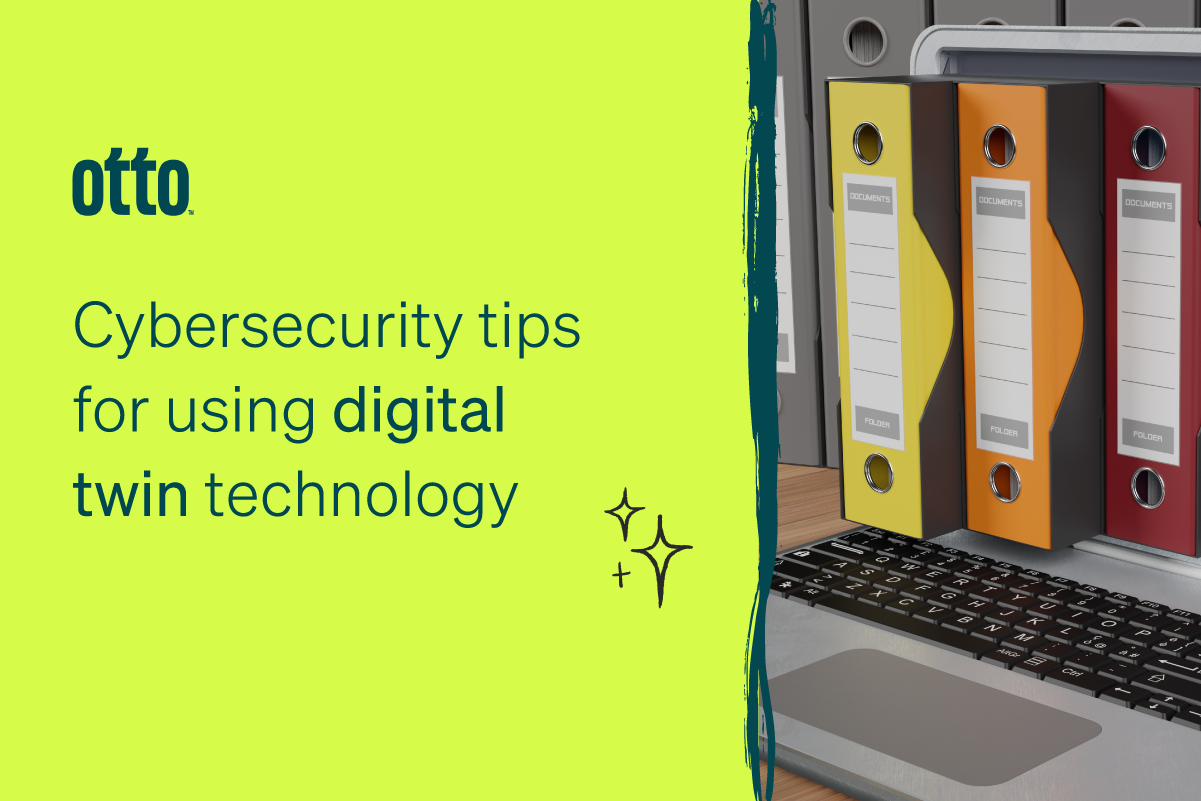As the world becomes more reliant on digital technologies, the concept of digital twin tech has become a game-changer, especially in manufacturing, product development, process development, and engineering sectors. The idea of a digital twin is that it is a virtual replica of a physical object, process, or system. This means that designers, engineers, and operators can design,test, and simulate a system, process, or product’s performance before it is built or deployed, therefore reducing manufacturing costs, optimising performance and reducing downtime. Pretty cool, huh?
The use of digital twins has been beneficial in many ways, but like any connected tech, it’s not immune to cybersecurity risks that could lead to data breaches, theft, and sabotage. So, essential for organisations to recognise the potential risks and take the necessary steps to protect digital twins from cyberattacks. In this article, we will explore some of the cybersecurity concerns that organisations should consider when using digital twin technology.
What are the threats?
The virtualisation of physical assets creates new vulnerabilities and attack vectors that are different from traditional computing systems. Below are some of the threats that organisations that use digital twins might encounter.
1. Cybercrime:
Digital twins can contain sensitive and proprietary information, such as process and design secrets that make them a target for cybercriminals. Attackers can use various forms of attacks such as DDoS attacks or phishing attacks to break into the digital twin system and steal data. They may also use ransomware to encrypt the digital twin data, demanding payment to release it. According to a report by Deloitte, 80% of organisations that use digital twins have experienced a cybersecurity breach.
2. Hardware and software vulnerabilities:
Digital twins use hardware components and software applications that may have vulnerabilities that attackers could exploit. Attackers might target zero-day vulnerabilities in software components, use backdoors, or exploit unpatched systems to compromise a digital twin. These vulnerabilities could be exploited to steal data, modify system configurations, or even take over an entire system.
3. Malicious insiders:
Malicious insiders pose a significant risk to any organisation. These are employees or parties on your system that abuse their access privileges to steal sensitive data, plant malware, or tamper with the digital twin system to cause operational disruptions. Insider threats pose a considerable challenge as they are hard to detect and can cause significant damage before they are discovered.
4. Supply chain attacks:
Digital twins contain data that comes from various sources such as sensors, telemetry, and external systems. As such, the digital twin ecosystem can be a prime target for supply chain attacks. Attackers can infiltrate the digital twin through compromised components, services, or integrations.
Mitigating risks to digital twin technology
Organisations that use digital twins must take a comprehensive approach to cybersecurity that includes people, process, and technology. Below are some of the measures that organisations can use to mitigate risks to digital twin technology.
1. Implement access controls:
Access controls are the foundation of any cybersecurity program. Organisations should use Zero Trust security measures, including having strict access control policies for digital twin systems that limit access only to authorised personnel. Users should have unique credentials that follow strong password policies and two-factor authentication.
2. Regularly patch systems and software:
Digital twins use hardware components and software applications that require regular updates and patches. Organisations should have a patch management program that ensures all systems and software components are up to date, and all known vulnerabilities are patched as soon as possible.
3. Encryption:
Data encryption is a crucial component of any cybersecurity program, and it is particularly important for digital twin technology. Organisations should use encryption to protect the digital twin data both in transit and at rest. Encryption should be based on industry standards and best practices, and it should be routinely audited and updated.
4. Cybersecurity awareness training:
Cybersecurity awareness training is essential to help users understand their role in protecting digital twin technology. Organisations should provide regular cybersecurity training that focuses on best practices when it comes to password management, phishing and social engineering awareness, incident reporting, and staying up to date with cybersecurity news.
5. Regular security assessments:
Organisations that use digital twin technology should have a regular security assessment program that includes penetration testing, vulnerability scanning, and social engineering assessments. These assessments should be conducted regularly and followed by remediation actions to ensure that security gaps and vulnerabilities are addressed.
6. Incident response plans:
Digital twin technology should have a well-defined incident response plan that outlines the steps to be taken in the event of a cybersecurity breach. Incident response plans should include procedures for investigating and containing the breach, notifying relevant parties, and restoring operations as quickly as possible.
7. Monitoring and audit logging processes:
Monitoring and logging are critical components of any cybersecurity program. With digital twin technology, organisations need to monitor logs continually and analyse the information to detect potential breaches or suspicious activities. Additionally, it is crucial to have processes in place that enable auditors to review logs for compliance and cybersecurity purposes.
Digital twin technology is a powerful tool that enables organisations to improve their products and processes, reduce manufacturing costs, and optimise performance. However, the use of digital twins also comes with some cybersecurity risks. It’s essential to take appropriate measures to protect their digital twins from threats and optimise the results from this investment to properly protect your future!
Make your cybersecurity our problem – We’ve already got the solutions!
At Otto, a leading IT company and MSP in Melbourne, we’re all about the human side of tech – using proven, mature tech solutions to ultimately provide the best support and cybersecurity to your most important assets – your staff and customers. With our cybersecurity solutions and consulting services, it’s easier to secure your data, respond quickly to threats, and recover if an attack occurs. We’ll have your back, whatever your industry or the size of your business.
Book us for a FREE strategy call today! Let’s chat.



